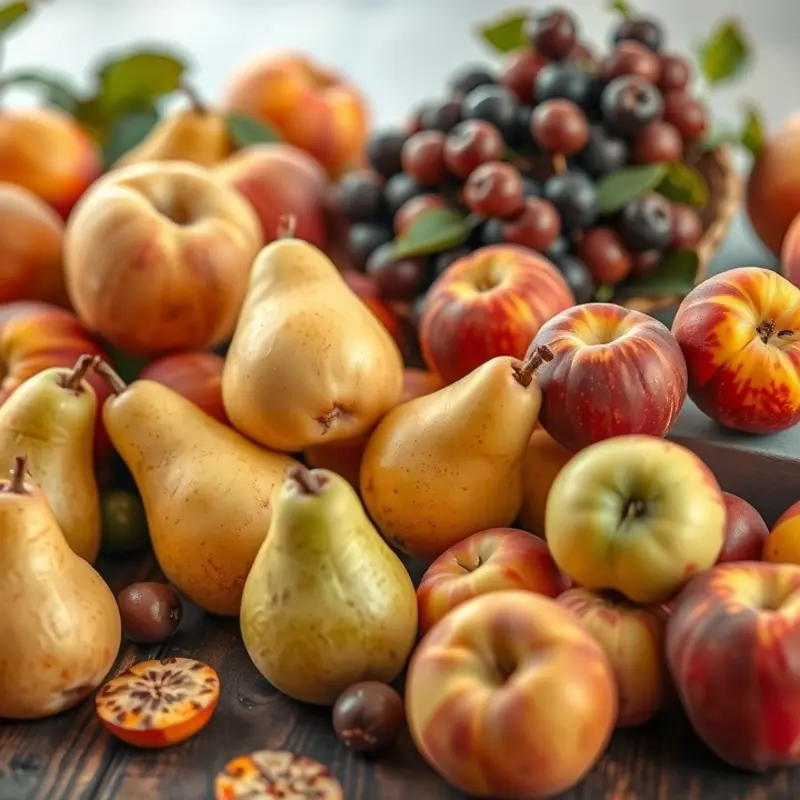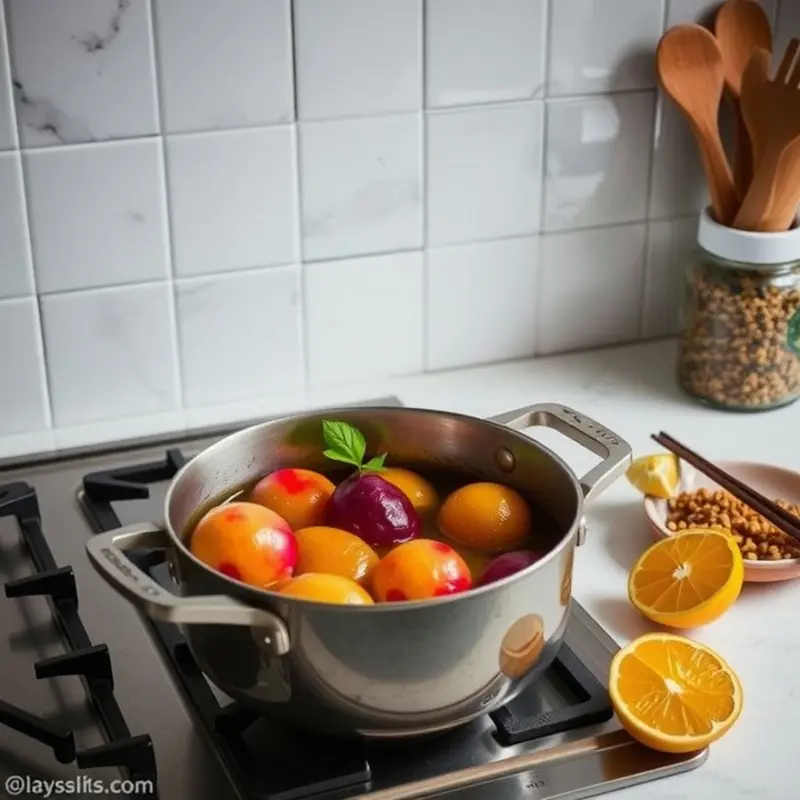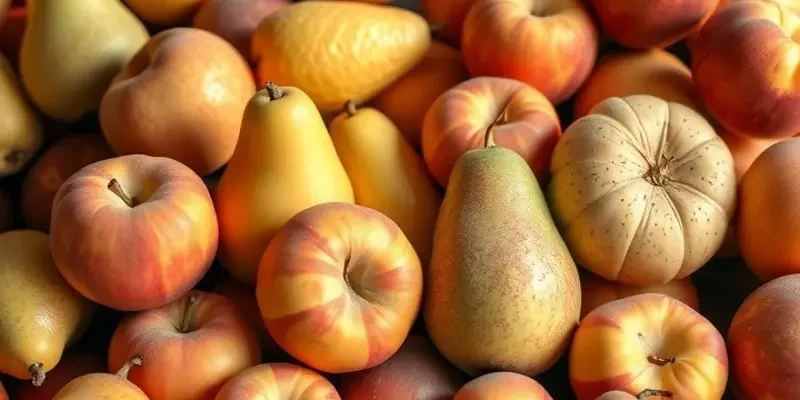Poaching fruit is a delightful way to enhance natural flavors while preserving their delicate textures. This gentle cooking method infuses fruit with sweet, aromatic syrups, making it perfect for desserts or as flavorful additions to savory dishes. Whether you’re a novice or an experienced home cook, mastering poaching techniques can enrich your culinary repertoire. Get ready to turn fresh fruit into elegant creations that impress without requiring extensive skill.
Choosing the Right Fruit for Poaching

Choosing the right fruit for poaching can transform a simple dessert into a culinary masterpiece. When selecting fruits, consider their textures and flavors and how these characteristics evolve upon poaching. This guide will help you navigate these choices, focusing on perennial favorites such as pears, apples, and stone fruits, alongside exploring seasonal varieties.
Pears are a classic choice for poaching due to their ability to absorb flavors while maintaining their shape. Bosc pears are particularly popular for their firm texture that withstands the poaching process without becoming mushy. Their sweetness pairs well with spices like cinnamon, vanilla, and cloves, creating a harmonious blend of taste and aroma.
Apples also make for excellent poached fruits, though different varieties yield varied results. Firmer apples, such as Granny Smith or Honeycrisp, retain their shape and offer a pleasant tartness that can balance a sweet poaching syrup. Their versatility allows them to absorb the flavors of accompanying spices and wine, enhancing their complex flavors.
With stone fruits, such as peaches, plums, and cherries, poaching can intensify their natural sweetness and vibrant colors, making them a visually appealing option for desserts. Peaches, when poached, become extraordinarily juicy and tender, absorbing both sweet and savory spices with ease. Cherries are excellent too, though they may require less poaching time.
When considering seasonal varieties, think of the fruit’s natural ripeness. Overripe fruits may break down too quickly, resulting in an undesired texture. It’s wise to select fruits that are ripe but still firm to achieve the ideal consistency post-poaching.
Balancing flavors is key to successful poaching. It’s about matching the fruit’s inherent qualities with complementary spices and liquids. For instance, a blend of white wine, honey, and cinnamon suits a delicate Bosc pear. Conversely, a mixture of red wine, vanilla, and star anise enhances the depth of plums.
Additionally, consider the purpose of poaching in your dish. If you aim to use poached fruits as toppings, maintaining a firmer texture is crucial. For purées and sauces, over-poaching can sometimes be beneficial. This adaptability is what makes poached fruits ideal for various dessert applications.
Understanding these nuances allows for creativity and experimentation. By mastering how different fruits react to poaching, you can craft desserts that not only taste divine but also boast the elegance and sophistication that poached fruits offer.
For more culinary tips and to ensure your poaching adventures are eco-smart, consider exploring eco-friendly kitchen storage solutions. This ensures that your ingredients stay fresh, reducing waste and enhancing the quality of your dishes.
With these considerations in mind, the art of poaching opens up a world of possibilities, elevating your desserts to new heights. The delight lies in discovering those perfect combinations that transform everyday fruits into extraordinary culinary experiences.
Simple Step-by-Step Poaching Techniques

Poaching fruit is an exquisite method to accentuate its natural flavors, transforming simple produce into a luxurious dessert. The secret lies in mastering the poaching liquid, temperature, and time. Let’s dive into a step-by-step guide to perfect poaching.
Preparing Your Poaching Liquid
Start by crafting a flavorful poaching liquid. Combine water and a sweetener of choice, like sugar or honey, in a saucepan. A basic ratio to follow is 2:1—two parts water to one part sweetener. Add aromatics such as a split vanilla bean, cinnamon stick, or lemon peel to introduce depth of flavor. The liquid should taste slightly sweeter than desired, as the fruit will absorb it during cooking.
Temperature is Key
Poaching is a gentle cooking technique, so keeping the temperature controlled is essential. Bring your poaching liquid to a simmer, not a boil. A simmer is identified by small bubbles breaking the surface occasionally. This gentle heat allows the fruit to cook slowly and evenly, preserving its structure and enhancing flavors.
Timing for Different Fruits
Fruits vary in density and sweetness, impacting how long they should be poached. Here’s a quick guide:
- Pears: 15–20 minutes, depending on ripeness.
- Peaches: 5–10 minutes, until the skin easily slips off.
- Apples: 10–15 minutes, based on thickness and variety.
- Berries: 2–4 minutes, just until tender.
For each fruit, test doneness by piercing with a skewer—it should glide through easily.
Enhancing Flavors with Spices and Aromatics
Aim for a balance of sweet, spicy, and zesty flavors in your poaching liquid. Consider adding star anise, cardamom, or fresh ginger for warmth. Citrus zest from oranges or limes adds a refreshing twist. Experimentation is key here; adjust spices to complement the fruit’s natural taste.
Practical Recipe: Poached Pears
Try this simple poached pears recipe to practice:
- Combine 4 cups water and 2 cups sugar in a saucepan.
- Add one vanilla bean, split and seeds scraped in.
- Peel and core 4 ripe pears, leaving stems intact.
- Submerge pears in the simmering liquid.
- Poach for 15–20 minutes until tender.
- Remove pears and boil the liquid to reduce to a syrup.
- Serve pears drizzled with the syrup.
For more tips on creating flavorful dishes without relying on salt, explore our guide on Flavor Boosters Without Salt.
These poaching techniques ensure you can elevate even the simplest fruits into a standout dessert. Perfect for serving alone or as an accompaniment to pastries or ice cream, your poached creations will be a hit at any meal.
Final words
Poaching fruit is an easy yet sophisticated technique to elevate your culinary skills. With just a few tools and techniques, you can turn simple fruit into exquisite dishes that are perfect for any occasion. Remember to choose fruits that are in season for the best flavor and health benefits. Don’t be afraid to experiment with your choice of poaching liquid, spices, and serving methods to create your signature desserts. With practice, the art of poaching will soon feel intuitive, and you’ll impress everyone with your delicious creations.







